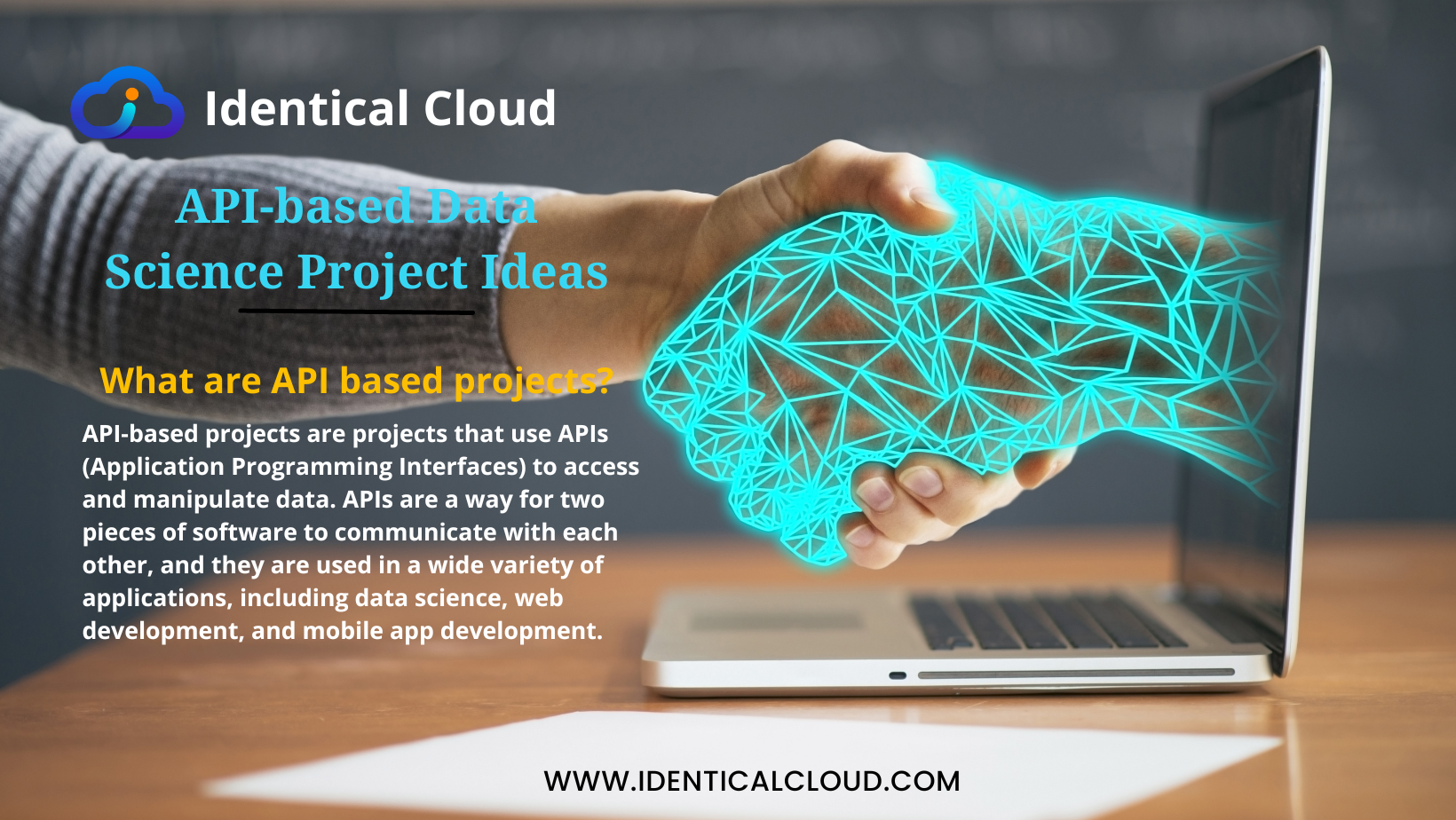
API-based Data Science Project Ideas
API-based Data Science Project Ideas
What are API based projects?
API-based projects are projects that use APIs (Application Programming Interfaces) to access and manipulate data. APIs are a way for two pieces of software to communicate with each other, and they are used in a wide variety of applications, including data science, web development, and mobile app development.
In a data science project, APIs can be used to access and collect data, build machine learning models, and deploy models into production. For example, you could use an API to access weather data from a weather service, build a machine learning model to predict the weather, and then deploy that model to a website so that people can see the predicted weather forecast.
There are many different APIs available, each with its own strengths and weaknesses. When choosing an API for a project, you need to consider the following factors:
- The type of data that the API provides.
- The ease of use of the API.
- The cost of using the API.
- The security of the API.
Once you have chosen an API, you need to learn how to use it. The API documentation will provide you with the information you need to get started.
API-based projects can be challenging, but they can also be very rewarding. By learning how to use APIs, you can build powerful data science projects that can make a real impact on the world.
There are many different APIs available, each with its own strengths and weaknesses. Some popular APIs for data science include:
- The Google Cloud Platform API: This API provides access to a wide variety of data sources, including Google Cloud Storage, BigQuery, and Cloud Natural Language.
- The Twitter API: This API allows you to access tweets and other data from Twitter.
- The Facebook API: This API allows you to access data from Facebook, such as user profiles, posts, and comments.
- The OpenWeatherMap API: This API provides access to weather data from around the world.
Once you have chosen an API, you can start using it to build your data science project.
Here are some ideas for API-based data science projects:
- Build a weather forecaster that uses the OpenWeatherMap API.
- Create a sentiment analysis tool that uses the Twitter API.
- Develop a recommender system that uses the Facebook API.
- Build a fraud detection system that uses the Google Cloud Platform API.
These are just a few ideas, and there are many other possibilities. The best API-based data science project for you will depend on your interests and skills.
Here are some tips for starting an API-based data science project:
- Choose an API that is relevant to your interests and skills.
- Read the API documentation carefully to understand how to use it.
- Start small and build your project incrementally.
- Don’t be afraid to experiment and try new things.
- Share your project with others and get feedback.
By following these tips, you can create an API-based data science project that is both informative and engaging.
Steps to Execute:
- Data Collection: Utilize the Twitter API to collect a stream of tweets containing keywords related to the topic of interest. The API provides real-time access to tweets, user data, and other metadata.
- Data Preprocessing: Clean and preprocess the collected data to remove noise, irrelevant information, and duplicates. Tokenize the text, remove stop words, and perform stemming or lemmatization.
- Sentiment Analysis: Employ Natural Language Processing (NLP) libraries and APIs to perform sentiment analysis on the processed tweets. Assign sentiment scores (positive, negative, neutral) to each tweet based on the sentiment expressed in the text.
- Data Visualization: Use data visualization libraries (such as Matplotlib or Plotly) to create insightful visualizations. Generate graphs and charts depicting trends in sentiment over time or across different user demographics.
- Topic Modeling (Optional): Apply topic modeling techniques, like Latent Dirichlet Allocation (LDA), to identify prevalent topics within the tweets. This adds depth to the analysis by revealing the underlying themes of discussions.
- Interactive Dashboard: Create an interactive dashboard using web development frameworks (like Flask or Dash) to showcase real-time sentiment trends and visualizations. Users can explore sentiment patterns and insights through the dashboard.
Benefits and Learning Outcomes:
- Real-World Application: This project idea mirrors real-world applications, as companies often use sentiment analysis to monitor brand perception and customer opinions.
- API Integration: By integrating the Twitter API and NLP libraries, you gain practical experience in using APIs to gather data and perform advanced text analysis.
- Data Visualization: You’ll master data visualization techniques, transforming complex sentiment data into clear and compelling visual representations.
- Interdisciplinary Skills: Building the interactive dashboard hones your skills in web development and showcases the potential of cross-disciplinary collaboration.
- Communication Skills: The project provides an opportunity to present your findings and insights effectively, highlighting the importance of clear communication in data science.
API-based data science projects like this Social Media Sentiment Analysis idea exemplify the fusion of technology and data analysis. By tapping into external data sources and services, data scientists can uncover valuable insights and contribute to informed decision-making. This project not only enhances your technical skills but also showcases your ability to translate raw data into actionable insights-a skill that’s increasingly valuable in a data-driven world. As you embark on this project journey, you’ll discover the transformative power of APIs in amplifying the impact of data science.
